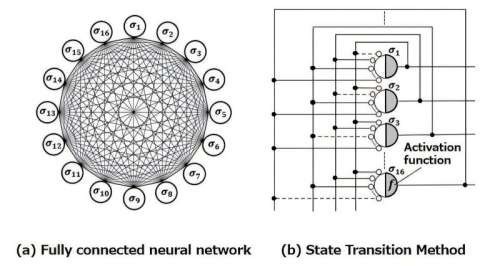
- 22-11-2024
- ML
Researchers improved Ising machines' scalability,achieving 400x faster optimization solutions, with applications in drug discovery and data center efficiency.
Researchers at Tokyo University of Science, led by Professor Takayuki Kawahara, have made a breakthrough in Ising machine technology, improving its efficiency for solving complex optimization problems. Ising machines, which rely on magnetic spin principles to find optimal solutions, have traditionally struggled with scalability due to the large number of interactions required in fully connected systems. Kawahara's team has found a way to halve the interaction matrix, reducing the physical interactions necessary while maintaining performance.
Their new approach involves dividing the interaction matrix into four sections, halving each one individually, and then restructuring the matrix into a more efficient rectangular layout. This innovation allows the implementation of two fully connected Ising machines, each with 384 spins, on just eight FPGA chips. This method improves scalability and reduces the required circuitry for large-scale systems.
In their experiments, the researchers successfully solved two classic optimization problems—the Max-Cut and Four-Color problems—simultaneously using their enhanced Ising machine, showing a performance boost of about 400 times compared to simulating one Ising machine on a standard CPU. The results highlight the potential of Ising machines in solving combinatorial optimization problems much faster than conventional computers.
These advancements pave the way for scalable Ising machines to be used in real-world applications, such as accelerating molecular simulations for drug discovery and optimizing the efficiency of data centers and electrical grids. As the technology continues to evolve, Ising machines could become indispensable tools for solving some of the most challenging optimization problems across industries